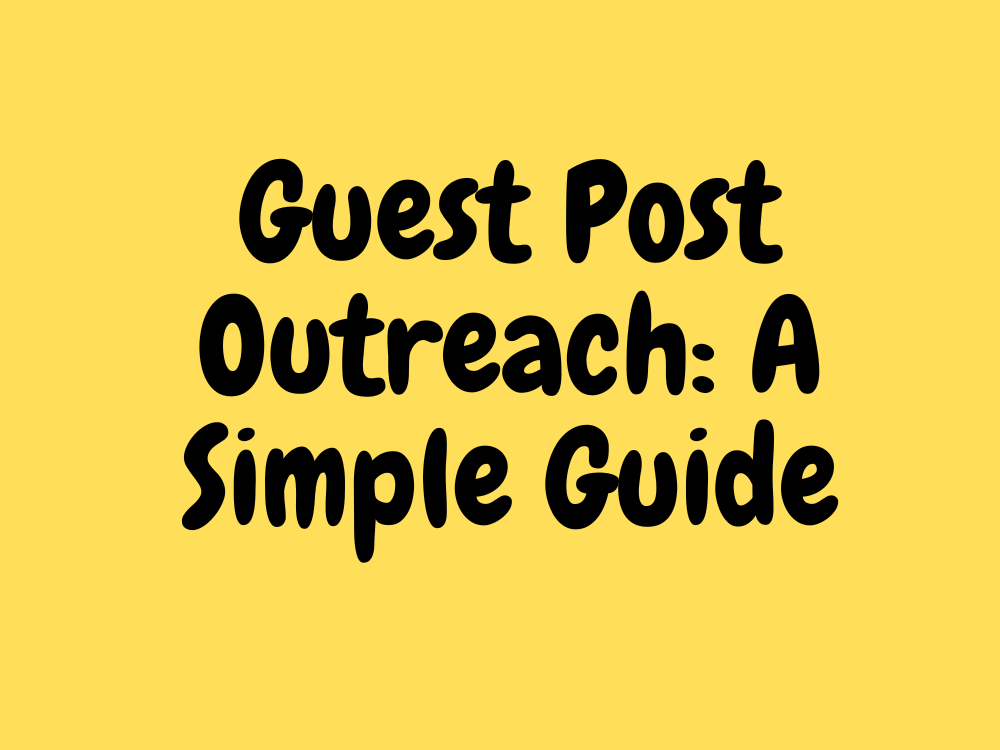Guest Post Outreach: A Simple Guide
 Shobo Adefowope
Shobo Adefowope
What is Guest Post Outreach?
Guest post outreach is when you reach out to other bloggers and websites to propose your content for their sites. The goal is to add value to their audience, build your authority, and reach new readers. According to a Moz survey, 18% of SEOs believe guest posting is the best link-building strategy because it helps get backlinks and grow your audience.
Increase the awareness and visibility of your site through SEO
Guest blogging services like Outreach Monks can help make this process faster by ensuring you get organic backlinks from sites in your niche that have real traffic.
Why is Guest Post Outreach Important?
Guest post outreach has several key benefits:
Building Relationships: Interacting with other blogs and websites can help you become known as a reliable source of information, leading to partnerships, backlinks, and other opportunities.
Raising Brand Awareness: Posting on other websites introduces you to a new audience, helping you build your brand and attract more visitors to your blog. For example, a small marketing business can expand its reach and increase brand recognition by guest posting on popular marketing blogs and promoting the posts on social media.
Improving SEO: Getting backlinks from high-quality websites can boost your blog’s domain authority and search engine rankings. For example, a fashion blog can improve its SEO and organic traffic by guest blogging on other fashion websites.
Increasing Traffic: If your guest posts interest readers, they might visit your website to learn more about your business.
How to Do Guest Post Outreach Successfully**
Follow these steps to succeed in guest post outreach:
Find Potential Sites: Use tools like Buzzsumo, SEMrush, or Ahrefs to find reputable websites in your niche that accept guest posts.
Research the Site: Understand the target site’s audience and content to ensure your proposal is relevant. Knowing their social media presence and popular posts helps create a strong proposal.
Write Your Pitch: Draft a pitch that is friendly and professional. Mention your qualifications, why you’re a good fit for the site, and suggest a few potential topics. Highlight the value you can offer their audience.
Dos and Don’ts of Guest Post Outreach
Dos:
Research the Website: Ensure it’s a good fit for your content.
Personalize Your Outreach: Use the website owner’s name and mention specific articles you liked.
Provide Value: Create original, high-quality content that appeals to their audience.
Follow-Up: If you don’t hear back, send a polite reminder.
Be Professional: Maintain a courteous and formal tone in your communication.
Don’ts:
Send Generic Emails: Avoid impersonal, bulk emails.
Focus Only on Yourself: Emphasize how your post will benefit their audience.
Ignore Instructions: Follow the site’s submission guidelines.
Be Pushy: Respect the website owner’s time and decision process.
Forget to Say Thank You: Send a sincere thank you to the website owner for considering your guest post.
In Summary
Guest post outreach is an excellent way to boost your online presence and traffic. By following these steps and maintaining a professional, value-focused approach, you can strengthen your online presence and build positive relationships with website owners in your niche.
Get a Technical Audit for you website today. Contact me via Upwork
Subscribe to my newsletter
Read articles from Shobo Adefowope directly inside your inbox. Subscribe to the newsletter, and don't miss out.
Written by

Shobo Adefowope
Shobo Adefowope
Taiwo is a passionate Website developer and a Technical writer with 2 years of experience building responsive and user-friendly web applications. He specializes in HTML, CSS, JavaScript, and various front-end frameworks like React, Nextjs, WordPress and WooCommerce. He uses his technical knowledge to create clear and concise documentation and tutorials that help developers and end-users understand complex systems and processes